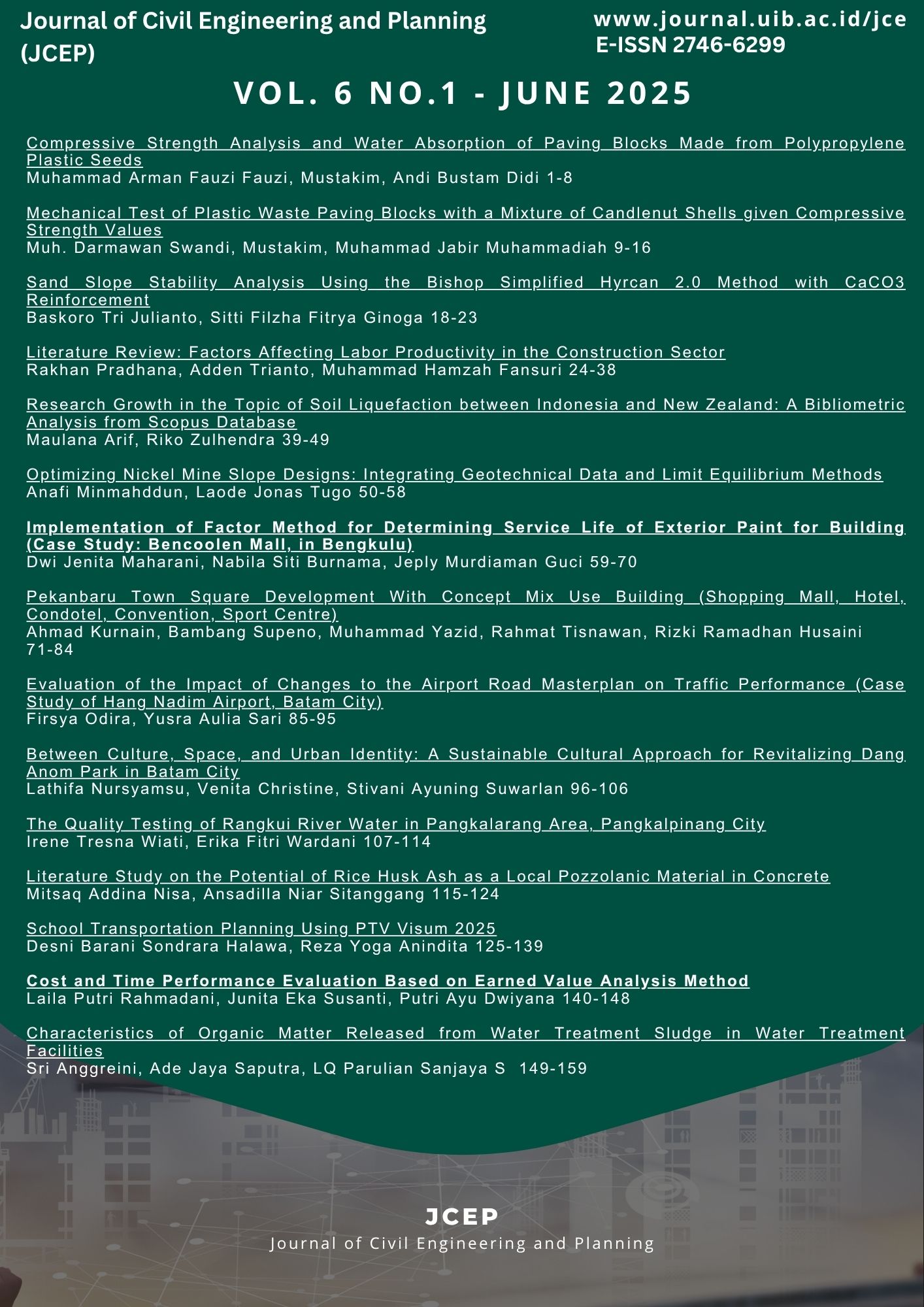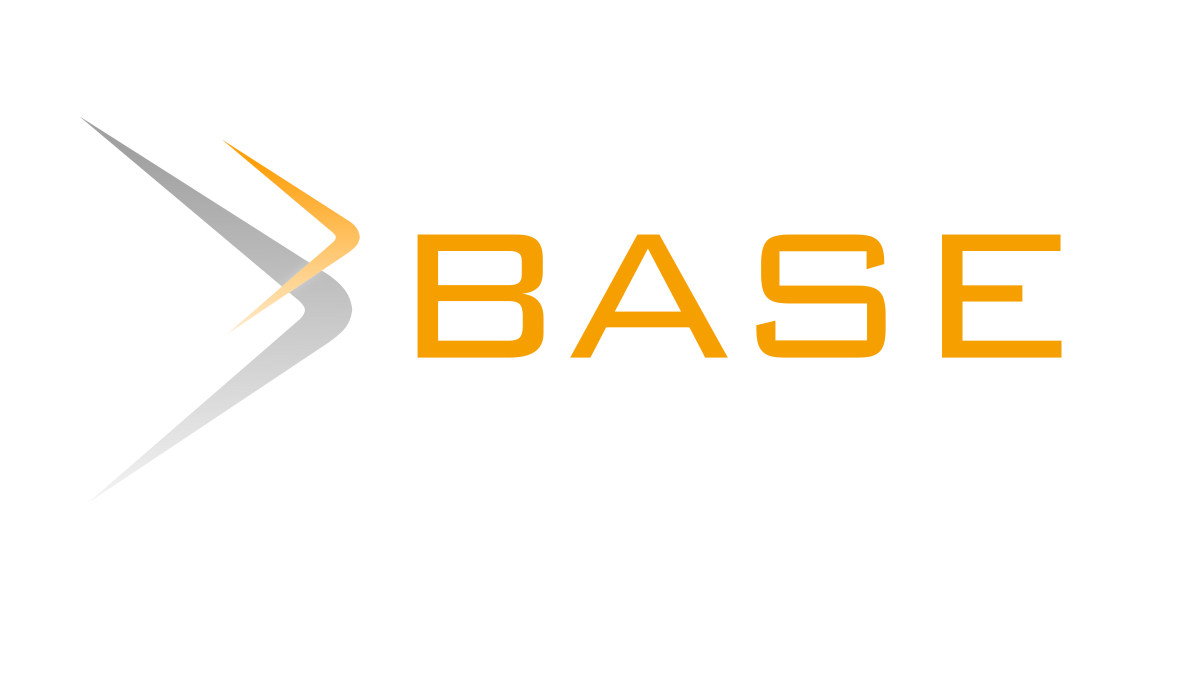Research Growth in the Topic of Soil Liquefaction between Indonesia and New Zealand: A Bibliometric Analysis from Scopus Database
DOI:
https://doi.org/10.37253/jcep.v6i1.10318Keywords:
Bibliometric Analysis, VOS Viewer, Soil Liquefaction, Indonesia, New ZealandAbstract
Soil liquefaction is important in geotechnical engineering, particularly in seismically active areas like Indonesia and New Zealand. With an emphasis on publications written by researchers from Indonesia and New Zealand between 2015 - 2025, This research is a bibliometric analysis that uses data from the Scopus database and the VOS viewer application to assist in interpreting the gathered bibliometric data. The author from New Zealand (Misko Cubrinovski) seems to be the most productive in researching and writing related to soil liquefaction, with 48 articles. Authors from Indonesia are relatively more evenly distributed, with 10-20 articles dominated by Sito Ismanti, Lindung Zalbuin Mase, and Teuku Faisal Fathani. In addition, compared to Indonesian institutions, New Zealand institutions are more likely to collaborate with external parties such as the United States (University of California, University of Texas, University of Washington, etc.), enabling them to obtain greater funding to encourage research productivity. The research map used Scopus RIS data showing three clusters: red (general liquefaction terms), blue (New Zealand-focused, e.g., CPT and shear waves), and green (Indonesia-focused, e.g., seismic response). Minor clusters (purple, yellow) link related topics.
Downloads
References
C. Shi, Z. Huang, Y. Zhou, J. He, F. Yang, and L. Hang, “Soil Desaturation Methods for the Improvement of Liquefiable Ground,” IOP Conf. Ser. Mater. Sci. Eng., vol. 562, no. 1, 2019, doi: 10.1088/1757-899X/562/1/012015.
P. Bhanwar and T. Dave, “A Review on Soil Liquefaction Mitigation Techniques and Its Preliminary Selection,” Lect. Notes Civ. Eng., vol. 136, pp. 437–449, 2019.
N. Ansly and K. R. Swamy, “Liquefaction Analysis of Soil Profile Underneath the Multi-storey Building,” Lect. Notes Civ. Eng., vol. 484, pp. 139–152, 2024.
M. Chang, H. J. Lin, R. R. Rayhansah, M. H. Fansuri, T. C. Upomo, and R. Kusumawardani, “Assessment on the improvement of liquefiable ground by stone-column, micro-pile and densification measures,” Smart Geotech. Smart Soc., pp. 563–566, 2023, doi: 10.1201/9781003299127-70.
B. Ramezani, H. Dehghan Khalili, P. Moradi, and A. Pourbagheri, “Seismic Resilience with Deep Soil Mixing: Numerical and Experimental Insights into Liquefaction Mitigation,” Geotech. Geol. Eng., vol. 43, no. 2, 2025.
A. R. Barrero, W. Oquendo, M. Taiebat, and A. Lizcano, “Cyclic Shearing Response of Granular Material in the Semi-Fluidized Regime,” in 5th Geotechnical Earthquake Engineering and Soil Dynamics Conference: Numerical Modeling and Soil Structure Interaction, 2018, pp. 100–107.
F. Teixeira, “Mechanisms to explain soil liquefaction triggering, development, and persistence during an earthquake,” Earthq. Sci., vol. 37, no. 6, pp. 558–573, 2024, doi: 10.1016/j.eqs.2024.07.003.
D. Kumar and S. Sengupta, “A-State-of-the-Art Review of Soil Liquefaction Mitigation Methods,” in 2nd International Conference on Recent Developments in Sustainable Infrastructure, 2022, pp. 263–273.
B. Ye, X. Ni, Y. Huang, and F. Zhang, “Unified modeling of soil behaviors before/after flow liquefaction,” Comput. Geotech., vol. 102, pp. 125–135, 2018.
Y. R. Intarti, I. S. Fitrinitia, and M. R. Widyanto, “Towards disaster management in Indonesia Case studies: Jakarta and Yogyakarta provinces,” in 5th International Symposium on Computational Intelligence and Industrial Applications, 2012.
Jamal, Sidarto, Ipranto, and S. Mawardi, “Geological interpretation based on satelite imagery: Updating geological maps of Indonesia to 1:50,000 map scale,” Bull. Geol. Soc. Malaysia, vol. 59, no. November, pp. 19–26, 2013, doi: 10.7186/bgsm59201304.
E. Hidayat, D. Muslim, Z. Zakaria, H. Permana, and D. A. Wibowo, “Tectonic geomorphology of the karangsambung area, central java, indonesia,” Rud. Geol. Naft. Zb., vol. 36, no. 4, pp. 85–105, 2021.
D. Muslim, Z. Zakaria, I. Sophian, E. Haerani, and S. Yamaoka, “Earthquake Hazard Perception of the Education Stakeholders in Sukabumi Regency, West Java, Indonesia,” J. Phys. Conf. Ser., vol. 1363, no. 1, 2019, doi: 10.1088/1742-6596/1363/1/012022.
A. Zakariya, A. Rifaí, and S. Ismanti, “COMPARATIVE ANALYSIS OF QUANTITATIVE INDICES FOR EVALUATING THE LIQUEFACTION POTENTIAL OF MEDIUM-DENSE COHESIONLESS SOIL,” J. Geoengin., vol. 18, no. 3, pp. 93–102, 2023.
S. V.I., L. A.A., and P. M.T., “The sumatra earthquake of December 26, 2004, as an event unrelated to the plate-tectonic process in the lithosphere,” Izv. Phys. Solid Earth, vol. 42, no. 12, pp. 1018–1037, 2006.
A. Hakam and E. Suhelmidawati, “Liquefaction due to September 30th 2009 earthquake in Padang,” Procedia Eng., vol. 54, pp. 140–146, 2013, doi: 10.1016/j.proeng.2013.03.013.
A. Iskandar, A. Rifa’i, and H. C. Hardiyatmo, “the Influence of Earthquake Significant Duration on Liquefaction Potential in Area Pasar Raya Padang,” Int. J. GEOMATE, vol. 27, no. 123, pp. 100–107, 2024, doi: 10.21660/2024.123.4687.
S. Nugroho, “STUDY GRADATION and MOISTURE CONTENT of SAND EMBANKMENT on PEAT SUBJECTED VIBRATION POTENTIAL LIQUEFACTION,” 2018. doi: 10.1088/1757-899X/316/1/012033.
L. E. Widodo, S. H. Prassetyo, G. M. Simangunsong, and I. Iskandar, “Role of the confined aquifer in the mechanism of soil liquefaction due to the 7.5 Mw earthquake in Palu (Indonesia) on 28 September 2018,” Hydrogeol. J., vol. 30, no. 6, pp. 1877–1898, 2022.
S. A. Namira, T. F. Fathani, and A. D. Adi, “The analysis of liquefaction potential in Balaroa area, Palu City, Central Sulawesi,” in AIP Conference Proceedings, 2023.
W. Rahayu, Nurizkatilah, and E. Bahsan, “Analysis of liquefaction potential in Lolu Village, Palu using SPT method and laboratory test of grain size distribution,” IOP Conf. Ser. Earth Environ. Sci., vol. 622, no. 1, 2021, doi: 10.1088/1755-1315/622/1/012016.
H. Artati, W. Pawirodikromo, P. Rahardjo, and L. Makrup, “Effect of Fines Content on Liquefaction Resistance During Steady-State Conditions,” Int. J. GEOMATE, vol. 25, no. 109, pp. 18–28, 2023, doi: 10.21660/2023.109.3481.
L. Chen, X. Yuan, and R. Sun, “Review of liquefaction phenomena and geotechnical damage in the 2011 New Zealand Mw6.3 earthquake,” World Inf. Earthq. Eng., vol. 29, no. 3, pp. 1–9, 2013.
M. Cubrinovski et al., “Geotechnical aspects of the 22 February 2011 Christchurch earthquake,” Bull. New Zeal. Soc. Earthq. Eng., vol. 44, no. 4, pp. 205–226, 2011, doi: 10.5459/bnzsee.44.4.205-226.
M. E. Stringer et al., “Geotechnical aspects of the 2016 Kaikōura earthquake on the South Island of New Zealand,” Bull. New Zeal. Soc. Earthq. Eng., vol. 50, no. 2, pp. 117–141, 2017, doi: 10.5459/bnzsee.50.2.117-141.
G. P. Setyadi, A. Rifa’i, and I. G. B. Indrawan, “Effects of Soil Liquefaction to Foundation Bearing Capacity Based on Empirical and Numerical Simulation,” IOP Conf. Ser. Earth Environ. Sci., vol. 1373, no. 1, p. 012011, 2024, doi: 10.1088/1755-1315/1373/1/012011.
N. Agarwal and A. K. Dey, “A New Technique to Avoid Tilting Problems During Liquefaction,” Lect. Notes Civ. Eng., vol. 138, pp. 211–222, 2021.
B. H. Fellenius, B. Abbasi, and B. Muhunthan, “Liquefaction Induced Downdrag for the Juan Pablo II Bridge at the 2010 Maule Earthquake in Chile,” Geotech. Eng., vol. 51, no. 2, pp. 1–8, 2020.
Downloads
Published
Issue
Section
License
Copyright (c) 2025 Maulana Arif, Riko Zulhendra

This work is licensed under a Creative Commons Attribution 4.0 International License.



_0011.jpg)









